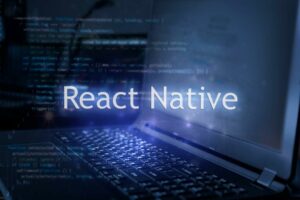Content
That means they are best suited for particular computing cases like batch jobs and jobs that can be terminated quickly. Jobs like this are common in large organizations, so Spot Instances should be part of all cloud cost optimization strategies. The next step is to start to understand the cost of your products — and how they connect with key business metrics — so you can be more strategic in how you take advantage of cloud-native architecture. On top of traditional cost optimization and management features, CloudZero also aligns costs with cost per customer, COGS, and unit costs like cost per feature, product, team, environment, and more. You can see several cost savings opportunities and methods for lowering your cloud computing charges.
- Connect with one of our cloud cost management specialists to learn how Anodot can help your organization control costs, optimize resources and reduce cloud waste.
- Beyond optimizing software architecture, organizations should also look to measure unit cost, COGS, and cost per customer as part of their cloud cost management strategy.
- Cost anomaly detection helps teams in finding different aspects that need to be checked to keep the cloud costs under control.
- Tags enable teams to identify, organize, segment, and search for resources within AWS.
- Cloud cost optimization is the net result of successful FinOps—cloud financial management—a set of business practices that link controls over the variable spend model of cloud IaaS to financial accountability.
Reviewing your cloud billing reports in near real-time or on a regular basis can be very beneficial to achieve a better understanding of the items you’re being billed for and where the majority of costs are occurring. Using tags or labels on all of your cloud resources can really help provide insights on your billing and help you break down the bill by things like project name, cost center, environment, resource creator, and so on. You can also use the cloud provider’s billing API to automate the generation of custom reports based on your resource tags and values. These custom reports can then be used for things like project cost tracking and many other efforts. Comparing the current or last month’s bill to previous months’ bills will allow you to see what services are creating increased costs and identify anomalies in the billing cycle.
Professional Services
In addition, you can use it to plan reserved instances, manage container costs, find anomalies and set alerts, as well as uncover opportunities for cost savings. Cloudability also integrates and pulls data from cloud monitoring tools like PageDuty and DataDog to provide more in-depth insights on cloud costs. However, as companies evolve to adopt next-generation cloud services — cloud cost management is increasingly focusing on architectural optimization. Through this lens, applications can be built so that infrastructure is highly elastic — so your company only pays for what you and your customers use. You can achieve cloud cost intelligence with the help of a solution like CloudZero. CloudZero is the only cloud cost intelligence platform that empowers engineering to understand and control cloud costs.

The best way to manage cloud costs over time is to look for ways to optimize costs without sacrificing speed or capability. A careful examination of your use case can help you define optimization opportunities in terms of value rather than cost per se. The easiest way to optimize cloud costs is to look for unused or unattached resources. Often an administrator or developer might “spin up” a temporary server to perform a function, and forget to turn it off when the job finishes.
How to Begin Using Cloud Cost Management
The FinOps group ensures that individual development teams have the right visibility into their cloud spending and are aware of and able to implement organizational policies and industry best practices. FinOps teams also facilitate cross-functional team collaboration on cloud cost management. Setting up billing alerts and alarms is a great way to stay on top of your cloud costs.

AWS offers over 300 different instance types—each suited for a variety of workloads. With such a vast selection available, selection of the right instance is overwhelming even for expert cloud architects. Unused resources that continue to run can add substantially to your monthly AWS bill.
Cloud Cost Optimization Data Sheet
You can save up to 90% when you choose Spot Instances over AWS On-Demand Instances. A few ideal use cases for Spot Instances include distributed databases, processing big data/machine learning, running CI/CD operations, and powering stateful applications. Without engineers’ involvement, it is also impossible to tag resources properly, rightsize them, or eliminate unused ones. With multiple dashboards monitoring petabytes of data from multiple cloud vendors, it is tough to make the right decisions.

Public clouds are typically much more cost-effective than traditional options, but that can create an overspend when there’s no budget for growth or spikes in demand. Across both on-premises infrastructure and in the cloud, software license fees comprise a large part of operating costs. Because managing and tracking these licenses is difficult when done manually, many organizations pay for significant numbers of untracked and unused licenses.
Guaranteed 5% Savings on Your AWS Bill with No Long-Term Commitment
Spot Instances let enterprises take advantage of the unused EC2 capacity in the cloud. Through spot instances, cloud providers offer excess capacity at a massive discount to drive usage and nullify the loss of idle infrastructure. An automated cost governance system can help businesses in optimizing and managing cost for cloud server.

This is called cloud cost intelligence — and it’s the next step to gain a strategic cost advantage for cloud companies. These cost optimization design principles come together in the cost optimization lifecycle. Below are four phases of the cost optimization lifecycle and 28 distinct actions we recommend that make up a cost optimization practice. While every business and environment will differ, we recommend following a defined cost optimization lifecycle process like this for continuous refinement and improvement. If, for example, cost per customer is increasing, this may be a sign that one or more of your customers are using your product more than others. Reservation Instances are a discount program for businesses that commit to using AWS for one or three years.
CloudCheckr Finance Manager
In short, cloud cost intelligence represents the ultimate in transparency, giving finance, developers, engineers, and any other relevant parties the information they need, when they need it, to control cloud costs. In cloud cost optimization, one of the most important goals is to ensure that costs correlate with productive and profitable activities. For this proactive approach to work, we need meaningful data –- what we call cloud cost intelligence. There are a few ways you can save on cloud computing immediately, such as scaling back or even eliminating resources. Your cloud governance team should lead a process of defining your global tagging policy. It will be important to work with key stakeholders to get feedback and buy-in.
Sign up to receive our newsletter with insights and thought leadership to achieve peak performance. Alvaro is one of Auxis’ founders and leads our IT Services Practice, including both Infrastructure Transformation and Application Integration & Development. Some of his specialties include IT Service Management , Cloud and Data Center Transformation, large Software Implementations, among many others. Referral Partner Program Build longstanding relationships with enterprise-level clients and grow your business. High Availability Resilient, redundant hosting solutions for mission-critical applications.
To prevent wasted costs and manage cloud usage effectively, follow these best practices for cloud cost optimization. Automate your cloud optimization strategy with AI-based automated insights and forecasting. Advanced cloud cost optimization solutions help you continuously optimize your cloud spend with real-time recommendations that are tailored to your environment and are quick to deploy. Companies can rely on their experienced IT staff, outsource to external consultants, or rely on cloud usage monitoring services to find the usage patterns. These cloud services and applications usage patterns can be then analyzed to calculate and perform consolidated cost analysis. These projections can be used to predict future cloud costs based on scalability, increased usage, and additional cloud services.
Cloud Cost Management Advantages
According to Gartner’s Cloud Spending Research, by 2025, 51% of IT spending in these four categories will shift from traditional solutions to the public cloud, as compared to 41% in 2022. Almost two-thirds (65.9%) of spending on application software will be directed towards cloud technologies in 2025, up from 57.7% in 2022. Use strategies like show back/chargeback and automated reporting to create a culture of cost awareness and improve cloud expenditure consciousness across departments.
Call and keep engineering at the cloud cost optimization table
It should come as no surprise that one of the best methods to save big on cloud costs is to proactively monitor your compute resource utilization and rightsize your EC2 infrastructure. Like anything in DevOps, being more proactive usually means better quality, lower costs, and fewer surprises. When engineers have access to cost data, they can make better decisions about how to architect their systems in a cost-optimized way — while reducing accidental overspend. Architectural optimization first starts with understanding the cost of different parts of your products. Start by mapping your cost to your different product features, so you can see what it costs to build and run your products. From there, you can identify which features cost you the most to run — and make decisions about where to optimize.
By tagging and grouping every item that consumes electricity in the kitchen, for instance, you can achieve a clear understanding of kitchen electrical use and appropriately assign costs. Yet while the end-goals of resource and pricing optimization may be clear, most organizations struggle to achieve them effectively. With the right FinOps strategy in place, your organization can maximize cloud efficiency while managing spend cloud cost management and planning for future consumption. Whether you’re moving to the cloud or would like to consolidate your infrastructure as a cost-saving measure, you’ll find the perfect managed Private Cloud solution at Liquid Web. Cloud Monitoring allows you to gain insights into the health and upkeep of your resources. In order to properly monitor your infrastructure, you must pay attention to every component contained within.
AWS Redshift clusters offer tremendous data warehousing capabilities in the cloud. Redshift enables organizations to sift through massive amounts of data using massively parallel processing and integrates well with S3 via RedShift Spectrum. The following cost optimization practices are almost universally applied by our Cloud Advisor team when helping enterprise clients improve their FinOps strategies. CloudZero organizes costs and correlates them to the engineering activity that generated them, giving you the context needed to make cost management decisions. Cost anomalies can be detected quickly and addressed before costs accumulate.
Define other metrics important to business goals.
However, AWS charges you for these Elastic IP addresses when idle or not in use. Keep an eye out for vacant IP addresses, or use Densify’s cloud cost intelligence to automatically discover unused and idle Elastic IP addresses. The recorded training video includes a recorded Q&A session, which answers frequent cloud cost management issues. https://globalcloudteam.com/ Exceeding the cloud budget is one of the major problems of the contemporary IT world. If feasible, the infrastructure and operation teams can create an application or service segmentation before migrating to the cloud. They can also submit a revised statement of work and final price after the application assessment phase is complete.
An outsourced cloud system can help reduce in-house IT costs, allowing a business to focus more on IT strategy. Instantly get an overview of your cloud usage, costs, and expected annual savings. In some cases, it can also benefit the business to guard against runaway costs by establishing budget quotas, or limits. Reaching the quota will trigger an alert that automatically stops spend – requiring an approval process to change. Think for a minute about your house, which uses electricity as the main resource.
The CloudCheckr Finance Manager tool is fully automated, so it’ll set your engineers free to innovate and finance teams up for cost insights that improve cloud cost planning and optimization strategies. You can control costs by rightsizing and scheduling when your resources run and stop. You can also create reports and share cost insights via Slack and Teams, integrate with enterprise tools like monitoring and CI/CD tools, and even override schedules when needed.

